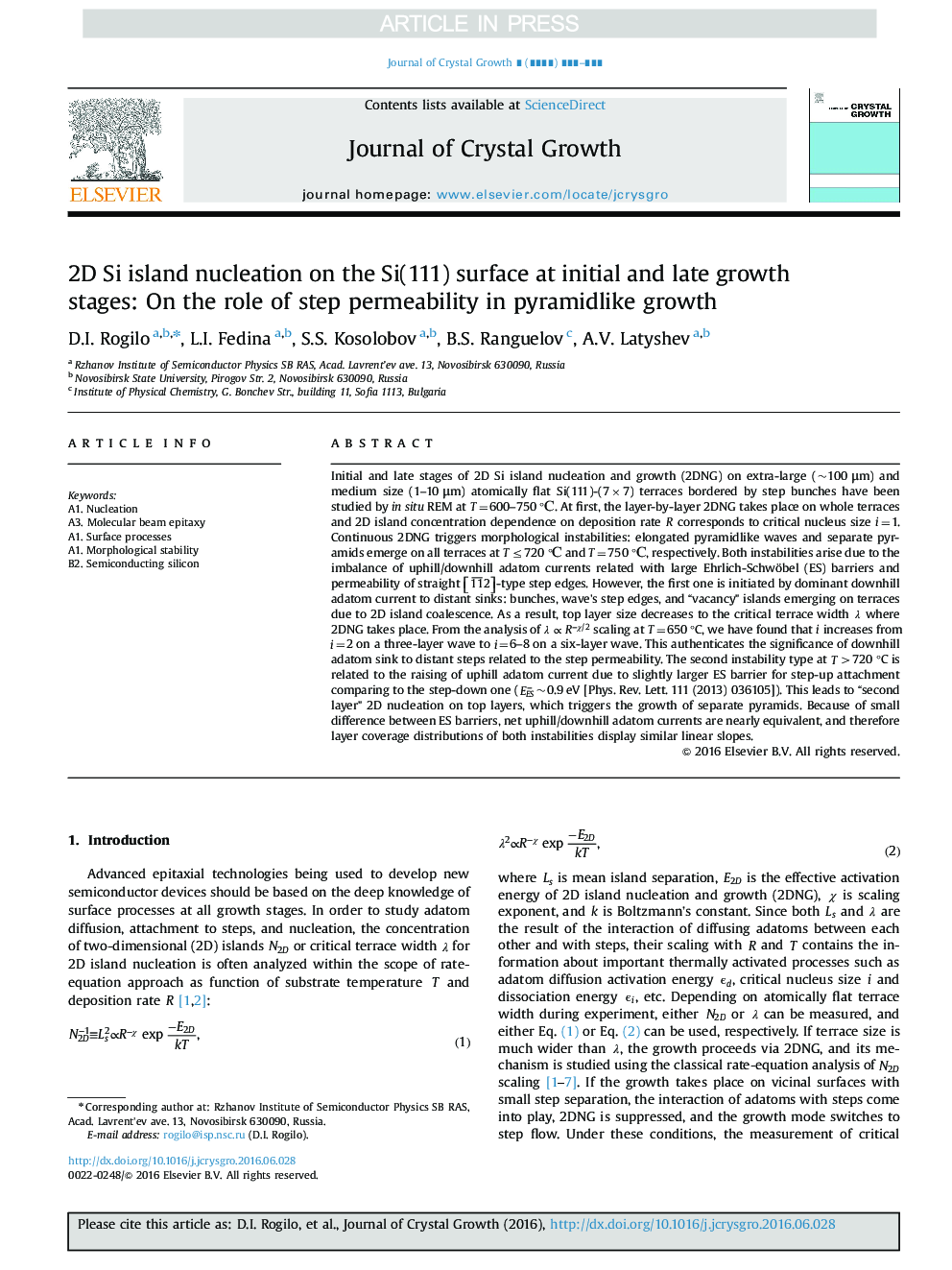| Article ID | Journal | Published Year | Pages | File Type |
|---|---|---|---|---|
| 5489729 | Journal of Crystal Growth | 2017 | 8 Pages |
Abstract
Initial and late stages of 2D Si island nucleation and growth (2DNG) on extra-large (~100 μm) and medium size (1-10 μm) atomically flat Si(111)-(7Ã7) terraces bordered by step bunches have been studied by in situ REM at T=600-750 °С. At first, the layer-by-layer 2DNG takes place on whole terraces and 2D island concentration dependence on deposition rate R corresponds to critical nucleus size i=1. Continuous 2DNG triggers morphological instabilities: elongated pyramidlike waves and separate pyramids emerge on all terraces at Tâ¤720 °С and T=750 °С, respectively. Both instabilities arise due to the imbalance of uphill/downhill adatom currents related with large Ehrlich-Schwöbel (ES) barriers and permeability of straight [11¯2]-type step edges. However, the first one is initiated by dominant downhill adatom current to distant sinks: bunches, wave's step edges, and “vacancy” islands emerging on terraces due to 2D island coalescence. As a result, top layer size decreases to the critical terrace width λ where 2DNG takes place. From the analysis of λâRâÏ/2 scaling at T=650 °C, we have found that i increases from i=2 on a three-layer wave to i=6-8 on a six-layer wave. This authenticates the significance of downhill adatom sink to distant steps related to the step permeability. The second instability type at T>720 °C is related to the raising of uphill adatom current due to slightly larger ES barrier for step-up attachment comparing to the step-down one (EESâ~0.9 eV [Phys. Rev. Lett. 111 (2013) 036105]). This leads to “second layer” 2D nucleation on top layers, which triggers the growth of separate pyramids. Because of small difference between ES barriers, net uphill/downhill adatom currents are nearly equivalent, and therefore layer coverage distributions of both instabilities display similar linear slopes.
Keywords
Related Topics
Physical Sciences and Engineering
Physics and Astronomy
Condensed Matter Physics
Authors
D.I. Rogilo, L.I. Fedina, S.S. Kosolobov, B.S. Ranguelov, A.V. Latyshev,
